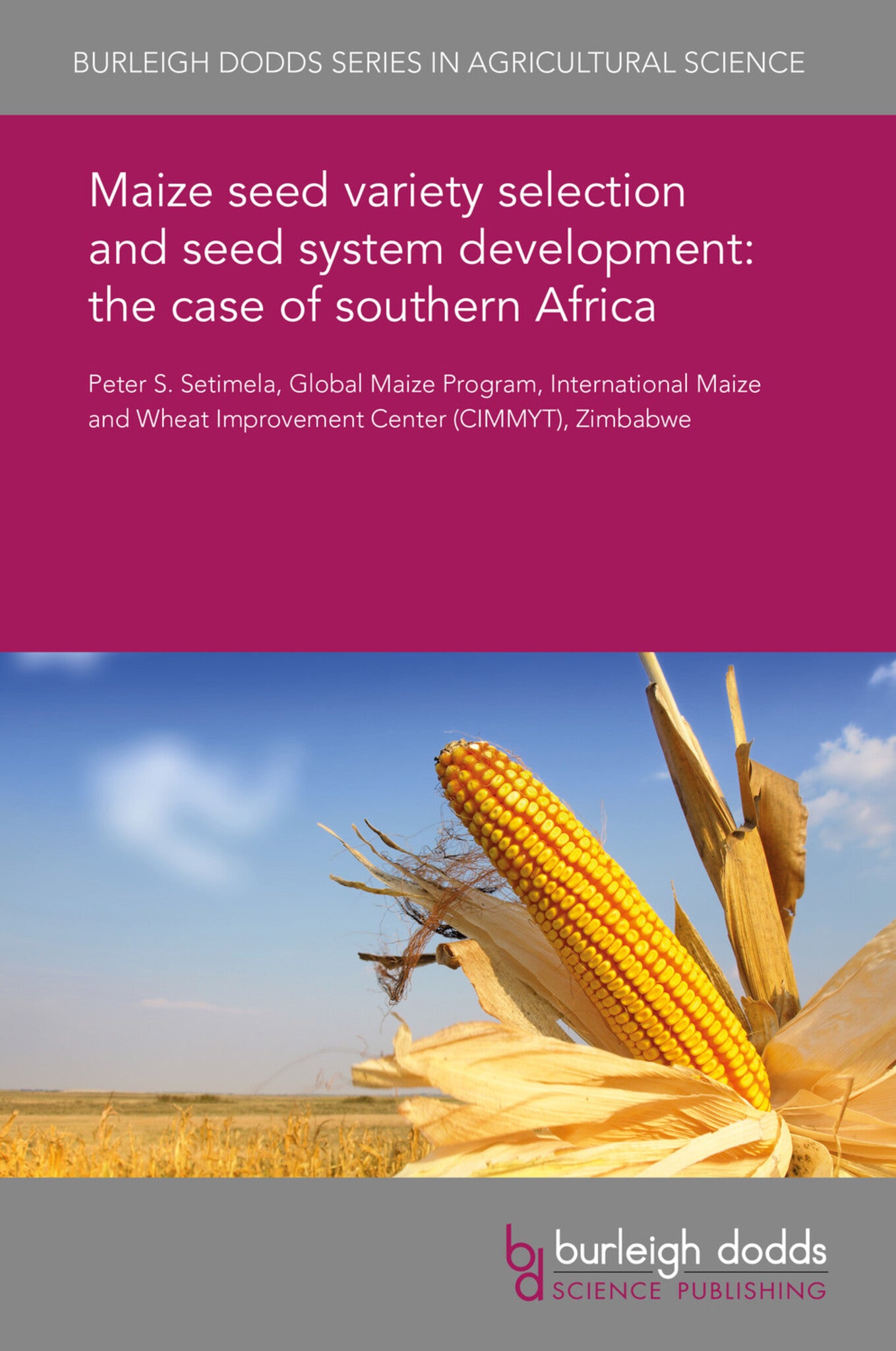We're sorry. An error has occurred
Please cancel or retry.
Maize seed variety selection and seed system development: the case of southern Africa
Regular price
£25.00
Sale price
£25.00
Regular price
£25.00
Unit price
/
per
Sale
Sold out
Re-stocking soon
Maize is the most important staple food crop in southern Africa. It is predominantly grown by smallholder farmers, but seed companies generally target large commercial farmers in high potential are...
Read More

Some error occured while loading the Quick View. Please close the Quick View and try reloading the page.
Couldn't load pickup availability
- Format:
-
27 July 2017

Maize is the most important staple food crop in southern Africa. It is predominantly grown by smallholder farmers, but seed companies generally target large commercial farmers in high potential areas when developing new varieties. To address the needs of smallholder farmers in maize genetic improvement, the International Maize and Wheat Improvement Centre (CIMMYT) initiated a collaborative drought and low nitrogen maize breeding programme aimed to increase yields in low-input and drought-prone environments in southern Africa. Since then, CIMMYT and seed companies have also introduced new maize varieties which are resistant to a variety of biotic and abiotic stresses. This chapter reviews key activities and the roles of key stakeholders in improving maize productivity for smallholder farmers in southern Africa. It also highlights the development and selection of first-generation maize germplasm, and the role of the seed industry in disseminating improved maize germplasm.

Price: £25.00
Publisher: Burleigh Dodds Science Publishing
Imprint: Burleigh Dodds Science Publishing
Series: Burleigh Dodds Series in Agricultural Science
Publication Date:
27 July 2017
ISBN: 9781838791186
Format: eBook
BISACs:
TECHNOLOGY & ENGINEERING / Agriculture / Sustainable Agriculture, Agronomy and crop production, TECHNOLOGY & ENGINEERING / Agriculture / Agronomy / Crop Science, Sustainable agriculture

1 Introduction 2 Maize variety development in southern Africa (SA) 3 Maize seed industries 4 The development of maize seed systems in SA 5 The adoption of modern maize varieties 6 Conclusions and future trends 7 Where to look for further information 8 References



